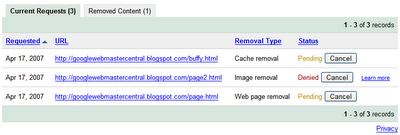Ruslan Russian Grammar Pdf Files
If searched for a book by Mikhail Ivanovich Glinka Ruslan and Ludmila Overture: Study score in pdf form, then you have come on to correct site.
Married Chuvash woman in costume of matchmake. There are rival schools of thought on the origin of the Chuvash people. One is that they originated from a mixing between the Turkic tribes of and also according to some researches with local populations. According to another theory, the Chuvash may be descended from the.
They have been subjected to much infusion and influence, not only from Russian and Turkic peoples, but also from neighboring, with whom they were persistently and mistakenly identified for centuries, perhaps aided by the fact that the Chuvash language is a highly divergent form of Turkic, and was not easily recognized as such.  Chuvash is classified, alongside the extinct, as the only remaining member of the branch of the Turkic language family. Genetics [ ] Physical anthropologists using the racial frameworks of the early 20th Century saw the Chuvash as a mixed Finno-Ugric and Turkic people.
Chuvash is classified, alongside the extinct, as the only remaining member of the branch of the Turkic language family. Genetics [ ] Physical anthropologists using the racial frameworks of the early 20th Century saw the Chuvash as a mixed Finno-Ugric and Turkic people.
In surveys of (mtDNA), haplogroups (mostly J2a) and are most common among the Chuvash, followed by and Subclades of haplogroups and are most common among the Chuvash. According to Rootsi et al.
2004, Tambets et al. 2004 (79 samples), and Trofimova 2005 (43 samples) the following distribution of haplogroups is obtained: •: 7% • I2a2: 0–2% • I2a1: 0–2% •: 0–2% • J2a: 0–9% • J2b: 0–5% •: 0% •: 2–4% •: 28–32% •: 18–19% •: 9–10% •: 0–14% •: 0–1% Haplogroups Q and C are rare among Chuvashes.
Chuvash carriers of (19% in hundreds of samples) are Z282 subclade. A study sampling of unrelated 96 Chuvashes concluded: Earlier genetic research using autosomal DNA markers suggested a Finno-Ugric origin for the Chuvash. This study examines non-recombining DNA markers to better elucidate their origins. The majority of individuals in this sample exhibit haplogroups H (31%), U (22%), and K (11%), all representative of western and northern Europeans, but absent in Altaic or Mongolian populations. Multidimensional scaling (MDS) was used to examine distances between the Chuvash and 8 reference populations compiled from the literature. Mismatch analysis showed a unimodal distribution.
Along with neutrality tests (Tajima's D (−1.43365) p. Distribution of Chuvash in the broader Volga-Ural region. Source: 2010 Russian Census.
The Turkic ancestors of the Chuvash people are believed to have come from central Siberia, where they lived in the basin (between the and ) from at least the end of the third millennium BC. In the beginning of the first century AD, the Bulgars started moving west through and the steppes of modern-day, reaching the in 2nd–3rd centuries AD. There they established several states ( on the coast and the in modern-day Dagestan.
Chuvash women in tradidional attire for married women. Old Bulgaria broke up in the second half of the 7th century after a series of successful invasions. Some of its population fled north, to the - region, where they established Volga Bulgaria, which eventually became extremely wealthy: its capital being the 4th largest city in the world. Shortly after that, the Suvar Duchy was forced to become a of Khazaria. About half a century later, the Suvars took part in the of 732–737. Culture [ ] They speak the and have some pre- traditions.
In addition to Chuvash, many people also use the Russian language. Religion [ ] Today Chuvash people are and belong to the. They retain some pre-Christian traditions in their cultural activities. They syncretized Orthodox Christianity. Parallel pray in the shrines called keremet and sacrifice geese there. One of the main shrines is located in the town of Bilyarsk.
Gallery [ ] •. Archived from on 2011-06-04. Retrieved 2016-02-09.
Archived from on 2012-03-14. Retrieved 2016-02-09. Archived from on February 7, 2009.
Retrieved October 21, 2009. Archived from on 2016-01-25. Tts voices free. Retrieved 2016-02-09. Archived from on 2016-02-06. Retrieved 2016-02-09. Retrieved 2016-02-09. Archived from on 2011-08-26.